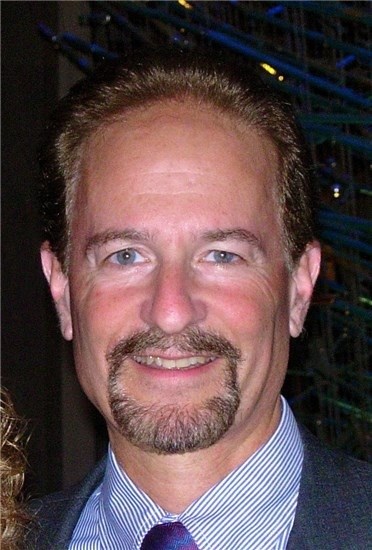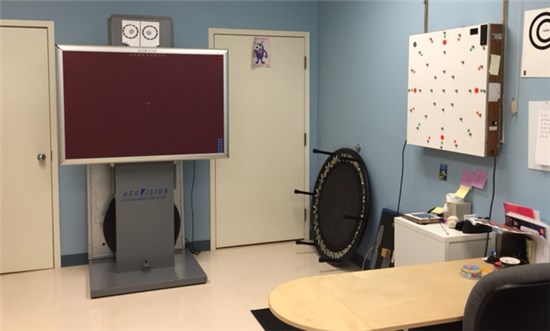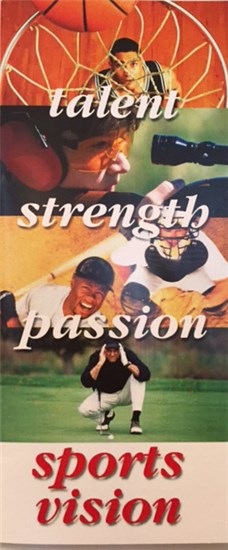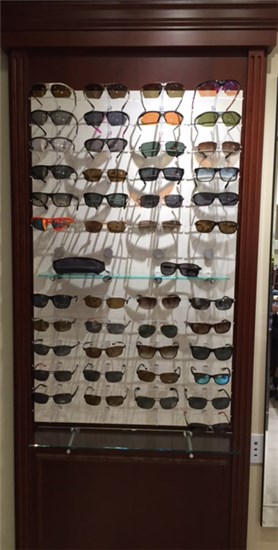By Alan Berman, OD
Nov. 18, 2015
SYNOPSIS
Sports vision is fast growing, fun and rewarding. Eight steps can put you into this field profitably–whether you offer it as a niche or as a full specialty.
ACTION POINTS
EXPAND SERVICES. Sports vision ranges from offeringa few pairs of sport-specific sunwear to providing sports vision therapy to improve performance.
BUDGET. You could spend a little as around $300 for basic sports-vision screening tests to $50,000+ on advanced sports testing and vision therapy equipment.
MARKET. Take a multi-channel approach:use web site and social media pages, in-office posters and brochures, and speak on sports vision in your community.
Sports and athletic hobbies, like skiing and hiking, are increasingly a part of our patients’ lifestyle. Many of our patients are looking to improve their performanceand enjoymentin these activities. My practice has built a sports vision specialty, which allows us to better serve our patients needs, spur ophthalmic and contact lens sales, and even draw in new patients.
Sports vision is a great area of growing interest, and fun and fulfilling to practice. You can participate in a limited way, offering sports-specific eyewear with a minimal investment of $300 for basic sports-vision screening tests. Or you can go full-boat, growing a specialty that expands into sports vision training (which we have done) with a major outlay of $50,000+ on sports vision equipment to test and train athletes.
Providing sportsvision yields many benefits. Itcan improve your patients’ athletic performance, and it also can make your practice stand out. In providingsports vision services, think beyond the athlete to other professions who have similar visual needs (e.g., policeman, armed services). Providing sports visionis fun, and it allows the doctor to do other testing outside of the exam room. Athletes are highly motivated and will do whatever it takes to improve their performance out on the field.

The sports vision training room in Dr. Berman’s practice. Dr. Berman says that taking a thorough lifestyle history of every patient, and having a discussion of lifestyle in the exam room, can help identify patients who could benefit from sports vision services.
Set the Scope of Your Sports Vision Services
Sports vision means a number of things. It can involve as little as fitting a contact lens or providing protective eyewear for an athlete, or it can be expanded into providing to the athlete a detailed visual performance evaluation or testing, along with visual-performance enhancement training.
The important thing is that sports vision specialists have the common goal of helping the athlete maximize his or her performance, and perhaps, gain a competitive edge.
Among the services you can provide is sports vision training, which encompasses three main areas:
Visual Calisthenics. This relates to general visual skills, such as eye tracking, accommodation (near-far focusing skills) and binocular visual skills (eye teaming), which when all put together, can result in an improvement in depth perception.
Sports-Specific Visual Motor Skills. Includes eye-hand-body coordination, peripheral reaction time, speed of recognition, anticipation timing and visual concentration, among other skills.
Visualization and Positive Imagery. This the athlete’s mental approach to his or her sport.

Dr. Berman markets his services through such things as asports vision brochure in the reception area. He also markets online and speaks about sports vision in his community
Set Investment Budget for Sports Vision
The investment you make in creating a sports vision niche depends on how in-depth and advanced the services, and what services, you want to provide. Your investment can be as little as few hundred dollars for basic sports vision-related screening tests conducted during the routine exam to $50,000+ for sports vision testing and training equipment that is used in a separate sports vision/vision therapy training room in the practice.
Emphasize Importance of Sun Protection
Our opticians guide the patient on which sports vision eyewear might be appropriate for them, and offer them the opportunity to purchase it from us. Some athletes prefer to shop around on their own, but many times will come back to us to receive the personal attention that we provide. We stress the importance of sunglasses to all of our patients, whether they are athletes or not. During our exam, we discuss the potential dangers of being exposed to UV radiation and its effects on eye and ocular damage.In addition, every contact lens patient is encouraged to get plano sunglasses, and we provide a financial incentive to do so.
Gauge Number of Sports Vision Patients & Frequency of Visits
The numbers of sports vision patients we see varies week-to-week and month-to-month.On average, we do about 50 vision therapy training sessions per month. Sometimes we only have vision therapy patients in our office doing training, and at other times, there are athletes coming in specifically to do training.
We do more vision therapy training than sports-specific training, but what we mention to our vision therapy patients is that, although the initial goal of training is to improve school and work performance, the secondary effect can be an improvement in their sports performance. That sometimes gives them additional motivation to do the program. At times, we may incorporate using sports vision training equipment with our general vision therapy patients.
Determine Greatest Sports Vision Needs in Your Area
In the area where my practice is located, in Southern Connecticut, we have a number of shooters (clay, skeet) as patients. They are generally an older demographic who have the disposable income to spend on specific eyewear and services to improve their performance. In addition, soccer, field hockey, football and basketball are also popular in our area.
Market Your Sports Vision Services
Most patients find out about our sports vision services by word of mouth. An athlete may tell his friend or teammate about his training, which in turn, gets back to the coach or parent. But that doesn’t mean we don’t proactively market our sports vision services.
There are two ways to market sports vision services:

A sunglasses display in Dr. Berman’s office, includes sunwear with various tints to accommodate different sports and outdoor activities. Dr. Berman says that he and his staff speak to every patient about the need for proper sun protection, including the role sunwear plays in enhancing athletic performance.
Internal marketing: Information on our web site, in-office pamphlets, brochures, pictures of sports vision screenings and endorsements from athletes we have worked with, practice newsletter articles, and sports vision logo/stationery.
External marketing: Speaking to various community groups (high school and little league coaches, health clubs, sports organizations, parent-teacher organizations) emphasizing how much of school and athletic performance is based on vision, doing a local sports vision screening with these groups, writing an article in local sporting media about vision and sports, getting on a radio talk show, etc.
During the routine exam, we discuss with our patients their sports and hobbies. That can lead to a discussion on their sports performance on the field. We may do one or two tests during the exam that peaks their interest in sports vision, such as our test for dominant eye, which can then lead to interest in returning to do a more detailed sport vision work-up.
When a patient comes in for a sports vision evaluation, we have a sports-specific questionnaire that the athlete fills out. This gives us an understanding of whether the athlete is aware of any vision problems that might be affecting performance, and whether he or she is motivated to do something about it.
Educate Doctors & Staff on Sports Vision
There are various sports vision books and articles available, as well as a number of online resources. The AOA offers sports vision continuing education courses at its annual meeting.
There are also one-on one-sports vision consultants who can provide detailed training on providing these services, including follow-up consultation, helping the doctor walk through his or her first few sports vision patients.
Discuss Sports Vision with Parents
When discussing visual options with the parent (or any athlete), we focus on two areas: enhanced visual performance and eye protection. Various options for enhancing visual performance are contact lenses, orthokeratology, refractive surgery and sports vision training.
With respect to contact lenses, athletes play under demanding conditions. They are exposed to UV radiation, dust, dirt, wind, etc. Their contact lens needs are more demanding than that of the average patient. Fortunately, there are quite a few options available to meet those challenges.
Whether it is a hybrid, or a single-use contact lens, we generally can find an option that works well for them. It may be a sports-specific lens, or one that they wear everyday. When discussing eye protection, most patients and parents understand the need for protective eyewear, whether it be sunglasses to protect them from UV radiation or sports goggles to protect from trauma.
Sports vision is a way to offer additional services to your patients, while at the same time increasing practice revenue – a win-win for both the doctor and patient!
Sports Vision Training Resources
Depending on the depth of what the doctor wants to offer, training to offer sports vision services can take a few hours (attending lectures or reading articles) to weeks or months working with a sports vision consultant.
Conferences & Lectures. AOA’s Annual Meeting often has content related to sports vision.
AOA Sports Vision Section. Click HERE to learn more about this organization, and the resources it provides. Members receive access to the Sports Vision Guidebook, which breaks down individual sports into testing, training, protective eyewear, ocular injuries/first aid, and includes an overview of the rules and regulations of each sport.
Books. Books devoted to sports vision and/or specific testing and training for a specific sport (i.e. golf). Click HERE for a Google listing of books devoted to sports vision training.
Online Articles. The topic of sports vision training has been covered by both the optical industry press, as well as the mainstream media, including even the New York Times. Click HERE for a listing of online articles related to this topic.
Sports Vision Specialist. One-on-one consultation with a sports vision specialist can give you greater insight on what your practice, specifically, will require to build a sports vision specialty.
Mentoring. Following the guidance of an OD who is more experienced in sports vision training can help you fill in some of the holes in expertise you may be missing as a beginner.
Practice Visitations. Visit a practice that already has a successful sports vision training niche up and running.
Related ROB Articles
Sports Vision Niche: Create a Dynamic Practice-Builder
Discuss Sports and Discover Needs, Increase Revenues
Free-Form Lenses: Address the Needs of Your Patients at Work and Play
Alan Berman, OD, is a partner in Ridgefield Family Eye Care, as well as the co-director of the Institute for Sports Vision in Ridgefield, Conn. He is a member of the American Optometric Association, the American College of Sports Medicine, the Sports Vision and Contact Lens Section of the American Optometric Association and the Connecticut Association of Optometrists. He is also a former president of the International Academy of Sports Vision. Dr. Berman is the founder and present co-chairman of the Vision Management Group, a national think tank and study group of optometric practitioners. To contact him: aberman714@gmail.com























